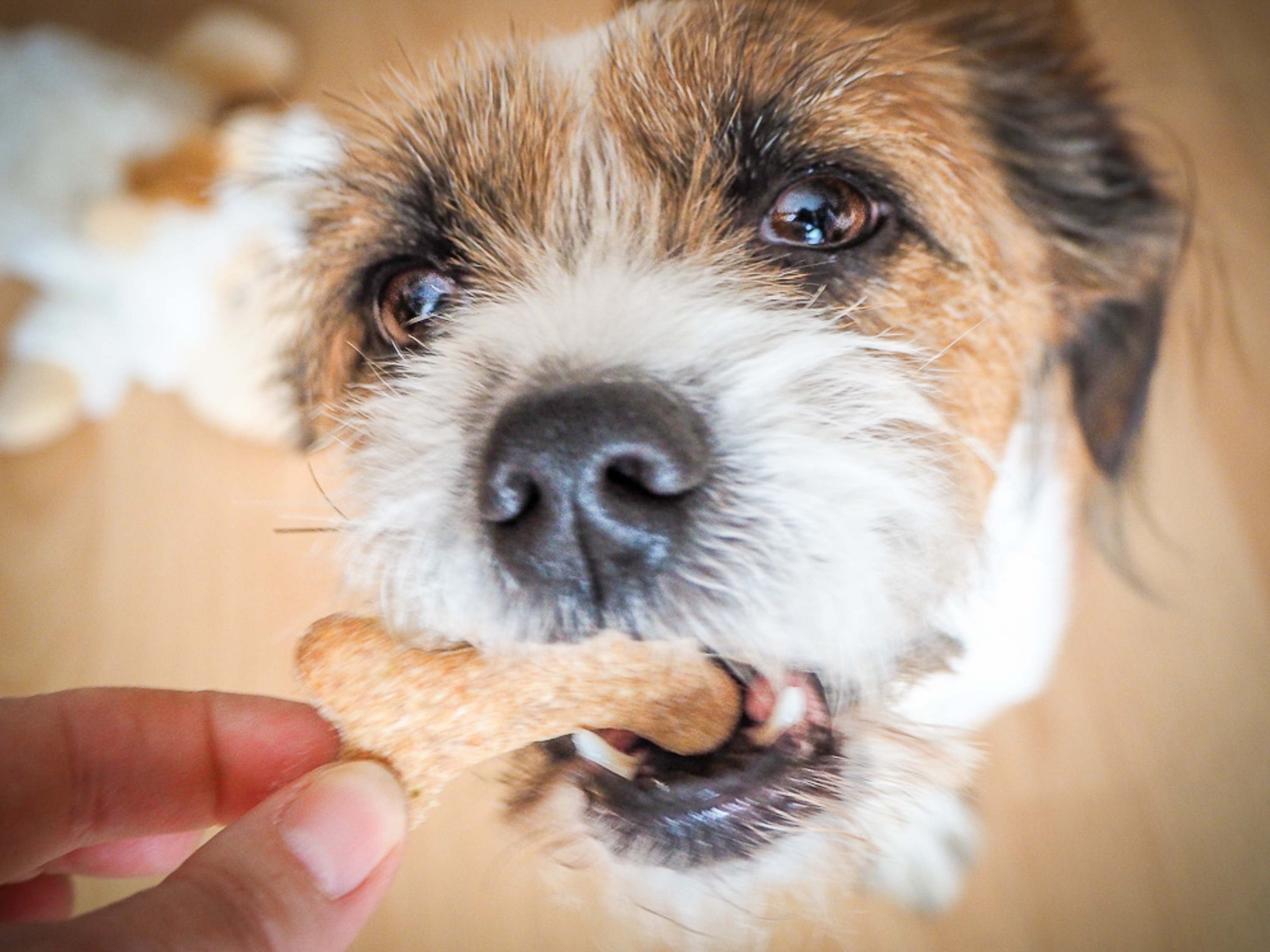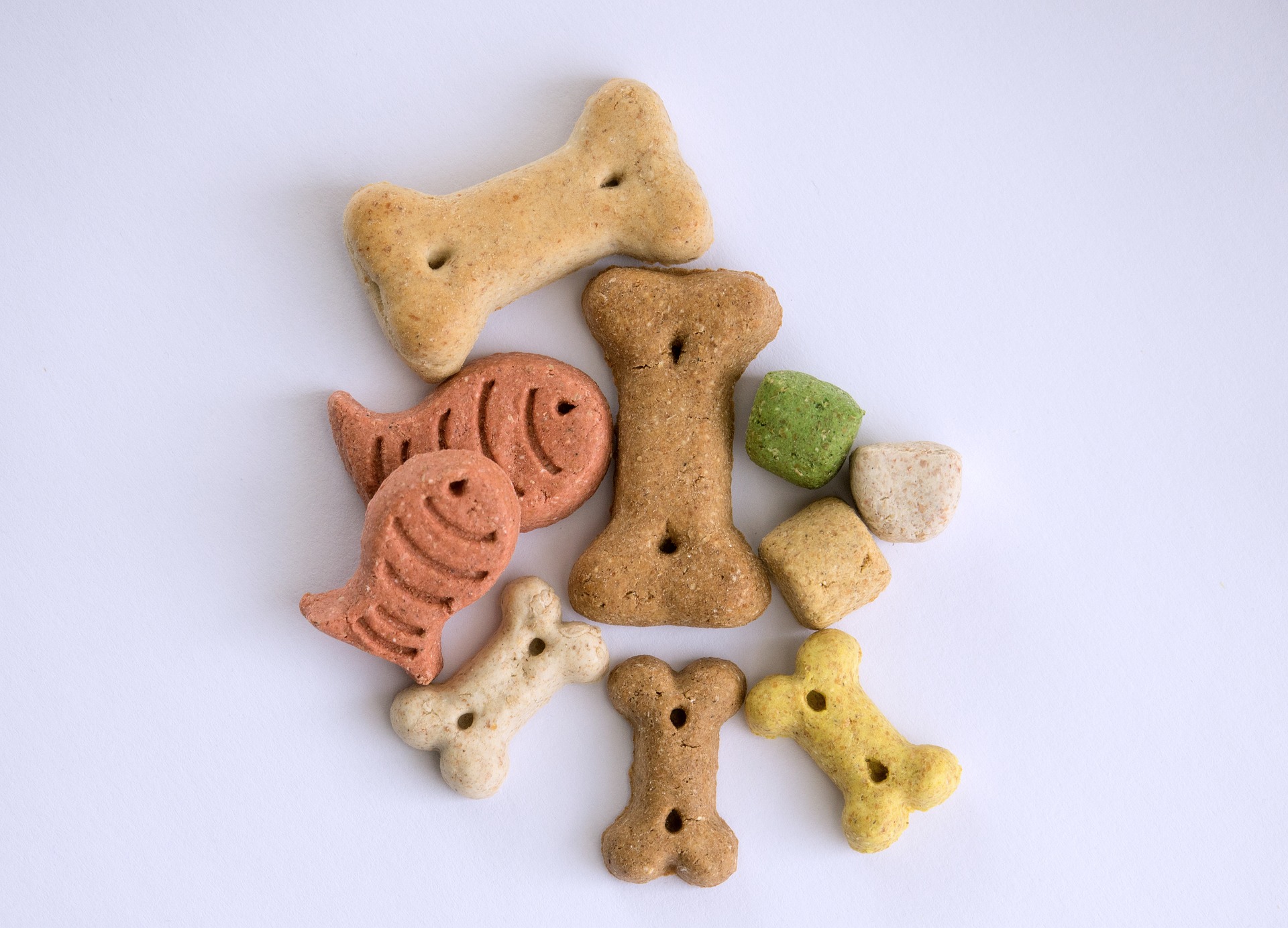
Are Treats Ruining Your Dog's Diet?
Dog owners love to spoil their dogs. Whether learning a new trick, behaving well, or just being too cute to resist, you might be tempted to shower your pup with cuddles, pets, toys and—of course—treats.
Unfortunately, giving treats can actually have a few negative consequences. If you praise the wrong things, you might be reinforcing negative behaviors. If you give too many rewards, your dog might only respond to commands if there’s a treat in your hand. And—one of the most dangerous possibilities—you might be giving your dog so many treats that you are ruining its diet.
Giving too many treats to your dog is definitely possible, and it can have some harmful consequences in the long term. Pet parents should be mindful of how many treats they are giving their pups each day to prevent nutritional imbalances and obesity.
The dangers of too many treats
Many pet owners think that the occasional treat won’t hurt their dog—after all, they’re so small! However, if you give your dog multiple treats each day, they will add up and likely contain more calories than you realize.
The biggest danger of feeding your dog too many treats is obesity. When your dog is getting too many calories from its food and treats each day, it’s unlikely to burn them all off, meaning it will gain more weight than is healthy.

Obesity increases your dog’s risk for numerous health problems, including arthritis, diabetes and pancreatitis. Not only that, but it can make exercise and general movement more difficult for your pup, potentially reducing its quality of life and introducing even more health issues from a sedentary lifestyle.
The other danger in feeding your dog a large number of treats each day is that treats are not formulated to be nutritionally balanced. Unlike your dog’s normal food, which has been specially formulated to contain all the macro and micronutrients your pup needs to stay healthy, treats may only contain some nutrients, along with other ingredients that might not be the healthiest for your dog to eat a lot of. Without all the necessary nutrients, your dog may experience health problems and illnesses.
How many treats are appropriate for your dog?
So, if too many treats are bad for dogs, then how many are appropriate? A good rule of thumb is that treats should make up no more than 10 percent of your dog’s daily caloric intake.
To determine this, you’ll need to do a little math. Your vet should be able to give you a target caloric range for your dog’s daily diet. Once you have that number, divide it by 10 and that's your magical treat number. Next, find out how many calories each typical treat contains and then calculate how many calories worth of treats are appropriate for your dog.
Pay close attention to the different calorie counts on each type of treat, if you have multiple options your pet finds delicious.

Remember that treats should be no more than 10 percent of the total caloric intake, which includes both foods and treats. Therefore, if you’re giving your dog 10 percent worth of treats, you should only feed it 90 percent of its calories in food. This might require a little extra math to determine how much food should be given, as well.
Additionally, remember that 10 percent is a maximum amount, not a recommendation—you don’t have to give your pet this many treats every single day! Just make sure you’re providing your dog with a little more food if you decide to reduce its treat intake.
By sticking to this rule, you can help ensure that your dog does not spoil its appetite with treats and does not eat more than it should on a daily basis.
Table scraps as treats
Finally, it’s important to note that feeding your dog table scraps as treats can make calculating its total treat calories much more difficult. It’s not nearly as easy to calculate the exact calorie count for a chunk of beef or a spoon full of vegetables. These foods can have surprisingly large amounts of calories and might exceed your dog’s recommended treat calories more than you’d expect.
For this reason, it’s important to stay away from table scrap treats, to understand the caloric count for each treat you give to your dog and to know how one treat differs from other treat options. In general, low-calorie treats are the best choice for dogs, particularly when you’re using them as rewards during training.
If you find that your dog has a reduced interest in its food, preferring treats instead, or it is gaining weight quickly, make sure to cut back on the number of treats you give it and consult your veterinarian about a weight management plan to keep your pup healthy and nutritionally balanced.


